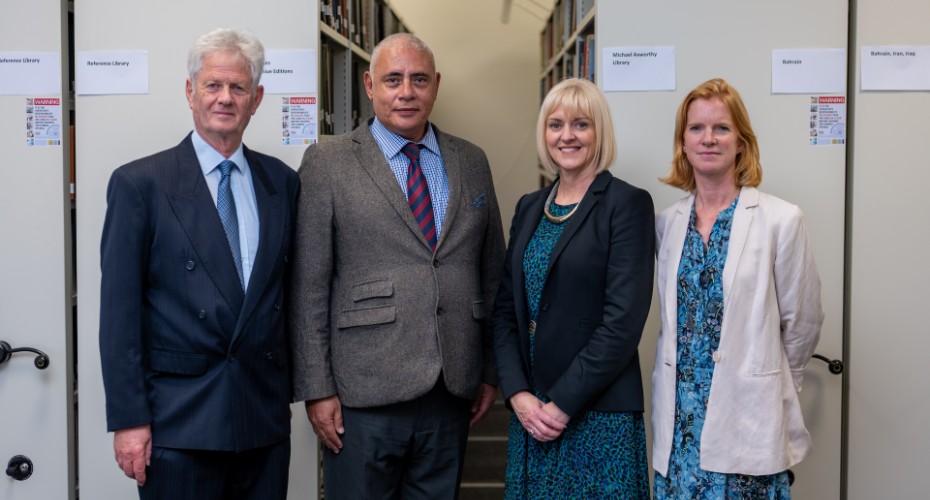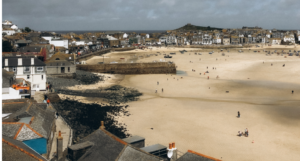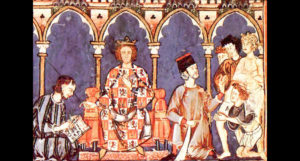New home for unique documents charting the complex history of the Middle East and North Africa

The University of Exeter’s Arab World Documentation Unit contains books, leaflets, official statistics newspaper articles, reports and a wide range of other printed materials dating mainly from the 1960s to the 1990s, with some from the 19th and early 20th centuries.
Many are the only surviving versions and their new home means the rare papers will be more easily accessible for researchers and students analysing the Middle East and North Africa.
They were donated to the university’s Institute of Arab and Islamic Studies from embassies, researchers and others who realised their significance and the importance of keeping them for future generations.
The unit was officially opened by Professor Gareth Stansfield, Pro-Vice-Chancellor and Executive Dean, Faculty of Humanities, Arts and Social Sciences and Professor Lisa Roberts, University of Exeter Vice Chancellor.
Dr James Downs, the collection’s librarian, said: “We are delighted to have this refurbished space for our unique collection. We will continue to add to it so this wonderful collection will continue to evolve and grow, holding once more its central place in the heart of the University of Exeter’s Institute for Arab and Islamic Studies.”
Professor Roberts said: “We are extremely proud of the Institute of Arab and Islamic Studies, which is ranked as the highest performing research centre of its kind in the country. The collection in the Arab World Documentation Unit – started by visionary Exeter scholars – contains so many treasures and we are delighted its new location will significantly increase access to them.”
The University of Exeter’s Middle East and North Africa collections began in 1973 when Professor Mohamed A. Shaban, a lecturer in Islamic studies in the Department of Theology spent a grant he was given in bookshops in Beirut. After Professor Shaban became head of the new Department of Arabic and Islamic Studies in 1979 he continued to secure generous donations and make frequent book-buying trips to the region. These acquisitions helped to build up a small library of materials which were then housed at the Department’s base in the Thornlea building in New North Road.
The Centre for Arab Gulf Studies (CAGS) was formally established as a research institute in 1979 and staff began deliberately collecting material on the Gulf region that was being largely ignored elsewhere – a remarkable prescience that has made AWDU a unique resource today.
This included documentation on financial, economic and political developments, including newspapers and microfilms, foreign trade statistics, government policy plans, maps and oil industry ephemera.
The Institute of Arab and Islamic Studies was formed in 1999 and it’s new dedicated building opened in 2001. The Gulf Documentation Unit was moved from the university’s Old Library to the new Institute building in 2001 and renamed the Arab World Documentation Unit (AWDU) to reflect the widening coverage of its collections.
AWDU was moved back to the university’s Old Library in 2012 to create more space and to integrate the resources with the university facilities. But this led to the AWDU collections being under-used.
The launch of the Digital Archive of the Middle East (DAME) project – in partnership with the University of Tsinghua – provided the impetus for the collection to be housed in the IAIS building again.
The newly refurbished space for the first time includes dedicated shelves for Kurdish material – in recognition of the importance of the Institute’s Centre for Kurdish Studies – as well as the personal library of the late Michael Axworthy, Senior Lecturer in the Modern History of Iran, and Director of the Institute’s Centre for Persian and Iranian Studies.



